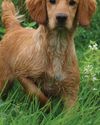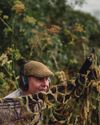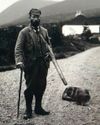
During a lull between jobs as a teenager, I found work catching moles. For all that my friends laughed at me, it was not such a ridiculous career prospect in those days. A few friends were quietly envious of my income as it began to grow into the spring and it was not hard to find work anywhere from farms and golf courses to fancy gardens and livery yards.
I charged £5 a mole, which seemed to cover most of the expenses required to make it work for me. A good Duffus barrel mole trap cost around £5 and once I had enough cash to invest in a dozen at once, I was off.
At its best, mole catching is a great way to get out and about around the countryside, creeping up ditches and around the muddy margins in search of elusive runs where traps can be set. Once you have cracked some of the guiding principles, it can be relatively straightforward work.
The trick is to do it quickly, not least because it frees up your traps for a different job. Speed is also handy because if you mess the same mole around for any extended period of time, he will become suspicious and harder to trap. Get in, catch the mole, get out again — a good mole catcher can do it all in a matter of hours.
At first it was hard to work out how moles moved and where they went. A field full of molehills may only be the work of a single mole, but often there is a confusing mismatch of territories overlaying one another. In the breeding season, the males seem to skip between multiple territories and it becomes easier to catch two moles at once — an achievement I used to call a “double header”.
This story is from the {{IssueName}} edition of {{MagazineName}}.
Start your 7-day Magzter GOLD free trial to access thousands of curated premium stories, and 9,000+ magazines and newspapers.
Already a subscriber ? Sign In
This story is from the {{IssueName}} edition of {{MagazineName}}.
Start your 7-day Magzter GOLD free trial to access thousands of curated premium stories, and 9,000+ magazines and newspapers.
Already a subscriber? Sign In

United we stand
Following United Utilities' decision to end grouse shooting on its land, Lindsay Waddell asks what will happen if we ignore our vital moors

Serious matters
An old gamebook prompts a contemplation on punt-gunning

They're not always as easy as they seem
While coneys of the furry variety don't pose a problem for Blue Zulu, he's left frustrated once again by bolting bunnies of the clay sort

Debutant gundogs
There's lots to think about when it comes to making the decision about when to introduce your dog to shooting

When the going gets rough
Al Gabriel returns to the West London Shooting School to brush up on his rough shooting technique

The Field Guide To British Deer - BDS 60th Anniversary Edition
In this excerpt from the 60th anniversary edition of the BDS's Field Guide To British Deer, Charles Smith-Jones considers the noise they make

A step too far?
Simon Garnham wonders whether a new dog, a new gun and two different fields in need of protection might have been asking too much for one afternoon's work

Two bucks before breakfast
A journey from old South London to rural Hertfordshire to stalk muntjac suggests that the two aren't as far detached as they might seem

Stalking Diary
Stalkers can be a sentimental bunch, and they often carry a huge attachment to their hill

Gamekeeper
Alan Edwards believes unique, private experiences can help keepers become more competent and passionate custodians of the countryside